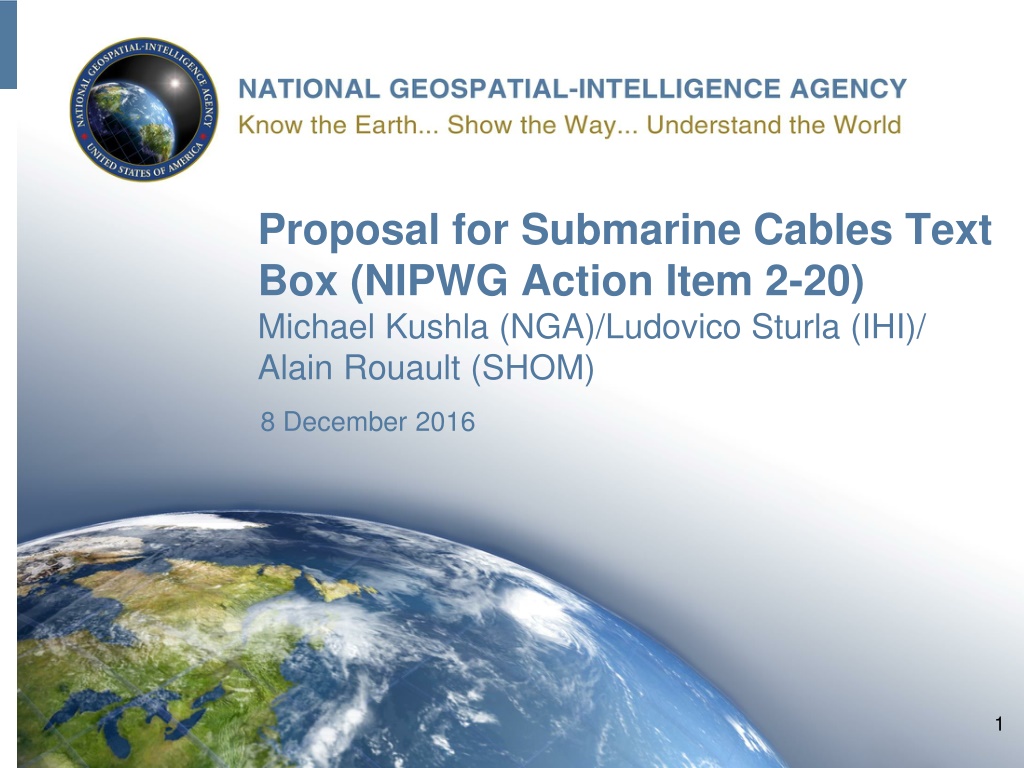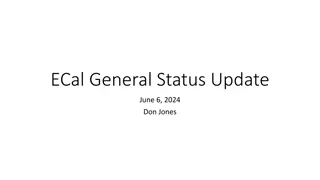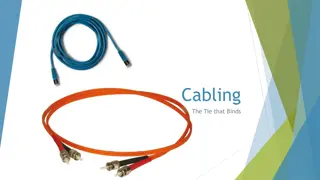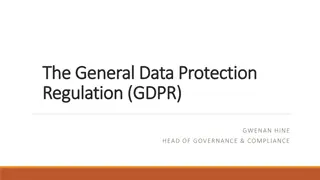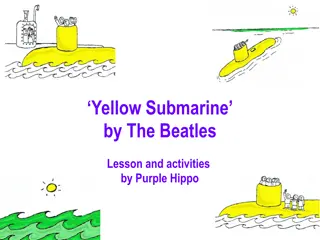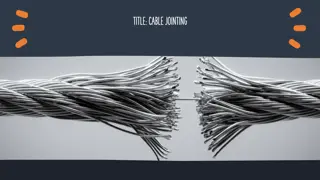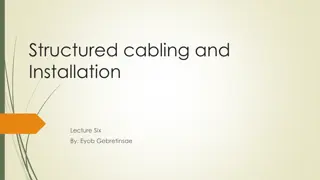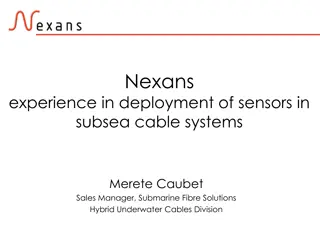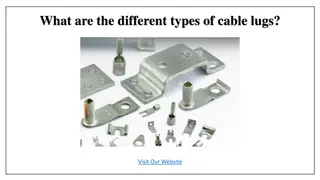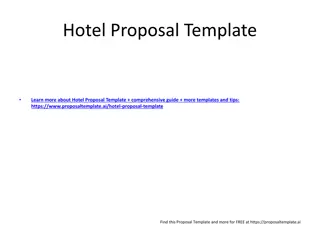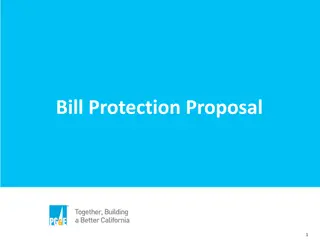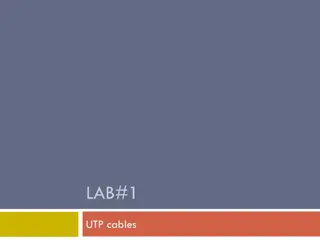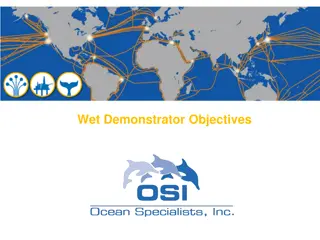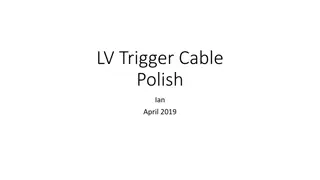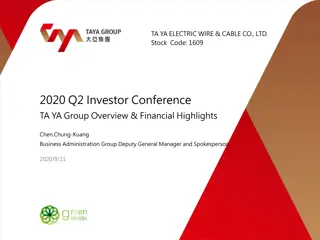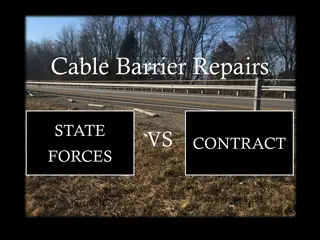Submarine Cable Protection Information Proposal
This proposal outlines collaboration between the International Hydrographic Organization and the International Cable Protections Committee to protect submarine cables and the marine environment. It covers standard information for mariners, consequences of cable damage, and operational warnings near submarine cables. The document also lists consulted sources from various hydrographic offices and highlights the importance of protecting submarine cable infrastructure.
Download Presentation

Please find below an Image/Link to download the presentation.
The content on the website is provided AS IS for your information and personal use only. It may not be sold, licensed, or shared on other websites without obtaining consent from the author.If you encounter any issues during the download, it is possible that the publisher has removed the file from their server.
You are allowed to download the files provided on this website for personal or commercial use, subject to the condition that they are used lawfully. All files are the property of their respective owners.
The content on the website is provided AS IS for your information and personal use only. It may not be sold, licensed, or shared on other websites without obtaining consent from the author.
E N D
Presentation Transcript
UNCLASSIFIED Proposal for Submarine Cables Text Box (NIPWG Action Item 2-20) Michael Kushla (NGA)/Ludovico Sturla (IHI)/ Alain Rouault (SHOM) 8 December 2016 1 1
UNCLASSIFIED International Hydrographic Organization (IHO)/International Cable Protections Committee (ICPC) Memorandum of Understanding (MoU) Signed on 18 April 2016. Specifies the scope of cooperation between the IHO and the ICPC. 2
UNCLASSIFIED International Hydrographic Organization (IHO)/International Cable Protections Committee (ICPC) Memorandum of Understanding (MoU) Merges the following interests: 1. IHO interest in the uniformity of nautical charts, charting standards, safety at sea, and protection of the marine environment. 2. ICPC interest in protecting submarine cable infrastructure and ensuring these protective measures have a minimal impact on the marine environment. 3
UNCLASSIFIED UNCLASSIFIED One section of the MoU had the potential to affect NIPWG work. From IHO Circular Letter 18/2016 of 18 April 2016 The development of standard information in nautical publications drawing the mariners attention to the necessity to protect cables against damage caused by ship operations. 4 4 UNCLASSIFIED
UNCLASSIFIED UNCLASSIFIED Hydrographic Office sources consulted to develop the text box for Submarine Cable Protection Information: Australia Annual Notice No. 14 of 2015. Belgium Annual Notice No. 1/30 of 2016. Italy Annual Notice No. 8 of 2016. Japan Pub. 304 (Part 1, Chapter 7, Page 21). South Africa Annual Notice No. 23 of 2015. United Kingdom BA NP 100, Mariners Handbook (paragraph 9.43). United States (NGA) Special Paragraph No. 13 from Notice to Mariners 1/2016. United States (NOS) Coast Pilot 1 (Chapter 1, paragraphs 1.20 to 1.25). 5 5 UNCLASSIFIED
UNCLASSIFIED Cable Protection Information from Hydrographic Office Sources Topic Consequences of cable damage What to do in case of fouling a cable Warning regarding operations near a submarine cable Possible depth changes and exposure of a cable Lowering a fouled cable to the seabed Existence of protected area around cable Reporting requirements Posted warning signs Potential for natural disaster or fines Instances 7 6 5 2 2 2 2 1 1 6
UNCLASSIFIED Proposed Submarine Cable Text Box Information Certain submarine cables are used for telecommunications functions while others carry high voltage. Damaging or severing a submarine cable, whether a telecommunications cable or a power cable, could rate as a national disaster and very severe criminal penalties may apply. Electrocution, with injury or loss of life, could occur if power cables are broached. Telecommunication cable damage may result in loss of voice, data transfer, or internet connectivity. In view of the serious consequences resulting from damage to submarine cables, vessel operators should take special care when anchoring, fishing, mining, dredging, or engaging in underwater operations near areas where these cables may exist or have been reported to exist. Mariners are also warned that the areas where cables were originally buried may have changed and they may be exposed; extreme caution should be used when operating vessels in depths of water comparable to the vessel s draft. Vessels fouling a submarine cable should attempt to clear without undue strain. Anchors or gear that cannot be cleared should be slipped, but no attempt should be made to cut a cable. Before any attempt to slip or cut gear from the cable is made, the cable should first be lowered to the seabed. In inland areas or along the coast, warning signs or marker beacons are often erected to warn the mariners of the existence of submarine cables. 7
UNCLASSIFIED Proposed Submarine Cable Text Box Information (continued) In order to avoid the risk of damaging submarine cables as much as possible, a 0.25-mile wide protected area1 exists on either side of the cable. Anchoring is prohibited within this area, even when there is no specific prohibition on the chart. Incidents involving the fouling of submarine cables should be reported immediately2 to the appropriate authorities3 who should be advised as to the nature of the problem and the position of the vessel. Notes: 1 Each hydrographic authority can set this distance to a value they feel is appropriate. 2 Each hydrographic authority can set the reporting time to a value they feel is appropriate. 3 The appropriate authorities can be listed here, as well as contact methods (telephone, facsimile, VHF, e-mail, internet, etc.) and required information. 8
UNCLASSIFIED Conclusions The proposed Text Box for Submarine Cable Protection Information would meet the IHO/ICPC MoU requirement to develop a standard for the display of Submarine Cable Protection Information, whether incorporated in an ECDIS or printed on a hard copy chart. NIPWG should consider submitting this paper to the next meeting of the Nautical Charting Working Group (NCWG). The information concerning the display of Submarine Cable Protection Information is also appropriate for display on a nautical chart. 9
UNCLASSIFIED UNCLASSIFIED 10 10 UNCLASSIFIED
